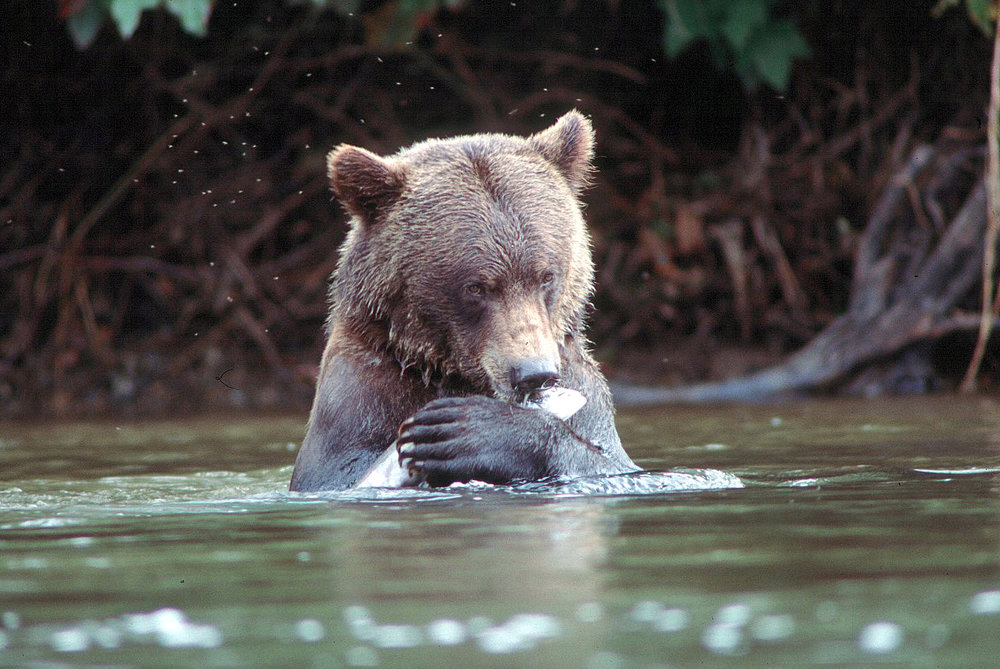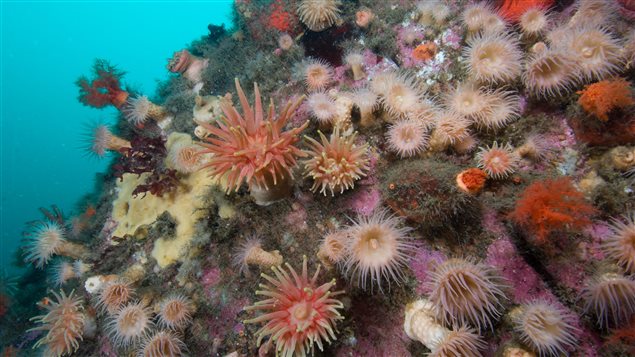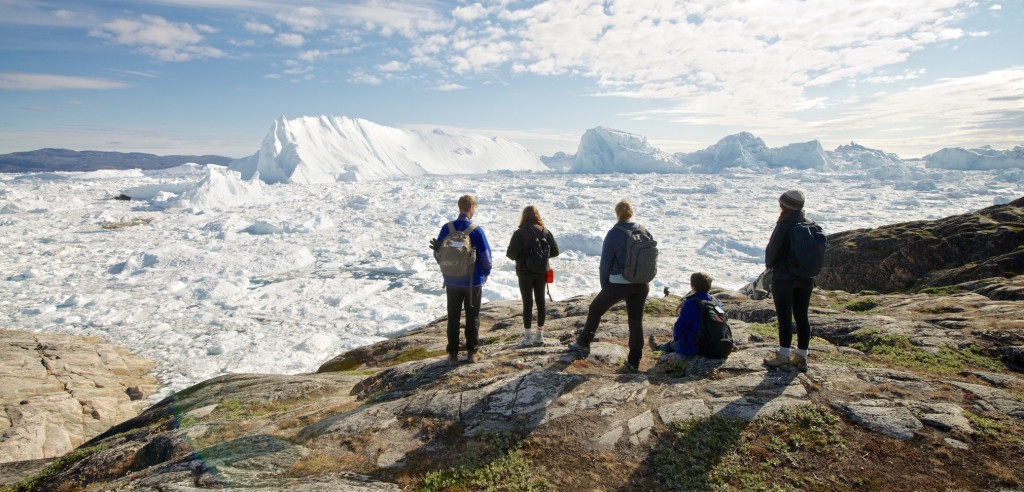Biodiversity Resources
|
|
2020 Biodiversity Goals and Targets for Canada Canada’s biodiversity goals and targets for 2020 complement the Canadian Biodiversity Strategy and the Biodiversity Outcomes Framework, and focus on Canada’s biodiversity priorities in the coming years. They will guide further action on the conservation and sustainable use of living resources in Canada and provide the basis for measuring and reporting on progress. Canada’s national goals and targets support the global Strategic Plan for Biodiversity 2011-2020 adopted by Canada and other Parties to the Convention on Biological Diversity in 2010. These goals and targets are aspirational objectives that Canada will strive to achieve by 2020 and are intended to encourage and promote collective action. They are goals and targets for Canada as a whole and progress will be reported at the national level.
|
|
|
A set of 20 global targets under the Strategic Plan for Biodiversity 2011-2020. They are grouped under five strategic goals:
Secretariat of the Convention on Biological Diversity (CBD Secretariat) (2014)
|
|
|
Birdlife Support Tools for Biodiversity Targets Birdlife International. (n.d.). Birdlife Support Tools for Achieving Biodiversity Targets. Retrieved from http://www.birdlife.org/sites/default/files/attachments/BirdLife_support_tools_CBD_COP12.pdf
|
|
|
To mark Canada’s 150th Anniversary, BioBlitz Canada 150 will bring together the Canadian public with scientists to explore the richness of Canada’s biodiversity and to engage our passion to know, celebrate and conserve our natural heritage. The Canadian Wildlife Federation (CWF), with BioBlitz Canada and other partners in conservation, will carry out a series of public bioblitzes across the nation. Across Canada, 35 bioblitzes will include five flagship events in urban areas including Vancouver and Toronto, 20 community-scale events and 10 science-intense blitzes. We will document the species discovered from sea to sea to sea to create Canada’s nature selfie. Through this project new scientific data will be generated and new species will be documented which will help to inform choices on such issues such as climate change and loss of biodiversity. These discoveries will be showcased to the Canadian public, wildlife managers, conservation organizations, educational institutions and government agencies to shape conservation decisions and ensure these wild species and spaces remain for generations to come.
|
|
|
Formed by practitioners in Washington and British Columbia’s Cascade mountains in the summer of 2012, the Cascadia Partner Forum fosters a network of natural resource practitioners working with the Great Northern and North Pacific Landscape Conservation Cooperatives to build the adaptive capacity of the landscape and species living within it. The Cascade mountains are divided at the crest by the current boundaries of the Great Northern and North Pacific Landscape Conservation Cooperatives, so this forum allows an opportunity to coordinate across these boundaries.
|
|
|
The Climate Impacts Group supports the development of climate resilience by advancing understanding and awareness of climate risks, and working closely with public and private entities to apply this information as they act to shape society’s future. They develop and deliver scientific information that is both useful to and used by the decision making community by fully integrating research with stakeholder engagement. They work on spatial scales ranging from local communities to the entire western U.S. region, with most work to-date focused on the Pacific Northwest. Research at the Climate Impacts Group is primarily supported by project-based grants and contracts from federal, state, and local sources.
|
|
|
Coast to Cascades Grizzly Bear Initiative Their goal is to restore the five threatened grizzly bear populations in southwest British Columbia and to connect grizzly bear habitat while encouraging environmentally responsible development. We can accomplish this by protecting grizzly bears from mounting threats and stemming their loss from our wild places, safeguarding year-round ample habitat, and ensuring connectivity between grizzly bear populations. They are a local and regional coalition united by a vision of thriving human communities and healthy, connected wildlife habitat. They have organized to highlight concerns around the plight of grizzly bears in the Coast to Cascades region of British Columbia – a biologically and culturally rich area at the intersection of the Coast, Chilcotin, and Cascades mountains.
|
|
|
Commission for Environmental Cooperation The CEC is mandated to address some of North America’s most pressing environmental priorities through its cooperative work program and other initiatives. Public participation in these efforts and responding to citizen submissions about environmental enforcement are central to its work. Their mission is to facilitate collaboration and public participation to foster conservation, protection and enhancement of the North American environment.
|
|
|
Committee on the Status of Endangered Widlife in Canada The Committee on the Status of Endangered Wildlife in Canada (COSEWIC) is an independent advisory panel to the Minister of Environment and Climate Change Canada that meets twice a year to assess the status of wildlife species at risk of extinction. Members are wildlife biology experts from academia, government, non-governmental organizations and the private sector responsible for designating wildlife species in danger of disappearing from Canada.
|
|
|
Their M.O. is simple: connect the big landscapes, restore the most vulnerable wildlife, and protect our natural heritage for future generations. From the Washington Coast to the British Columbia Rockies, they’re your voice for conserving wildlands and wildlife. They have protected hundreds of thousands of acres of wildlands, supported the recovery of threatened species from wolves to fishers, and touched thousands of lives throughout the greater Northwest. Their successful campaigns and groundbreaking collaborations help define our effective approach to conservation. Elected leaders, government agencies, and conservationists know us for being tenacious yet pragmatic. Led by the Cascadia Partner Forum and Conservation Northwest, WildLinks is their annual conference and science briefing that brings together researchers, conservationists, land managers, agency officials, tribal and First Nations leaders and other experts from Washington and British Columbia. The goal is to share ideas and better coordinate keeping our region’s wildlands and wildlife populations healthy and connected.
|
|
|
Convention on Biological Diversity The Convention on Biological Diversity (CBD) is an international legally-binding treaty with three main goals: conservation of biodiversity; sustainable use of biodiversity; fair and equitable sharing of the benefits arising from the use of genetic resources. Its overall objective is to encourage actions, which will lead to a sustainable future. The conservation of biodiversity is a common concern of humankind. The Convention on Biological Diversity covers biodiversity at all levels: ecosystems, species and genetic resources. It also covers biotechnology, including through the Cartagena Protocol on Biosafety. In fact, it covers all possible domains that are directly or indirectly related to biodiversity and its role in development, ranging from science, politics and education to agriculture, business, culture and much more.
|
|
“This project supported dry forest and savannah habitats in The Georgia Basin. Management objectives were to synthesize existing data into GIS tools that prioritized land acquisition and conservation investment. These tools will be used throughout British Columbia, Washington & Oregon to facilitate cross-boundary planning for the endangered forest and Savannah habitat.”
|
|
|
|
The Crown Managers Partnership seeks to demonstrate leadership in addressing the environmental management challenges in the Crown region by adopting transboundary collaborative approaches to environmental management. The voluntary partnership seeks to build common awareness of Crown interests and issues, shape relationships, and identify collaborative and complementary tasks that the various participating jurisdictions can pursue. The CMP seeks to improve the management of a large complex ecoregion containing multiple jurisdictions. This is accomplished by management agencies working together in the Crown of the Continent.
|
|
|
Engaging Canadian kids in wildlife conservation
Environment and Climate Change Canada (ECCC) is seeking proposals from organizations to develop and deliver a national-scale, regionally specific program aimed at educating and engaging children aged 6 to 12 in Canadian wildlife conservation. Overall, this funding will educate kids about protecting Canada’s biodiversity for future generations and the threats, like climate change, that impact it. More specifically, funding will support programming that achieves the following 3 goals:
|
|
|
Forest Stewardship Council — Forests For All Forever FSC is a global not-for-profit organization that sets the standards for what is a responsibly managed forest, both environmentally and socially. When timber leaves an FSC-certified forest they ensure companies along the supply chain meet our best practice standards also, so that when a product bears the FSC logo, you can be sure it’s been made from responsible sources. In this way, FSC certification helps forests remain thriving environments for generations to come, by helping you make ethical and responsible choices at your local supermarket, bookstore, furniture retailer, and beyond. They don’t set these standards alone. They consult with their global network of environmental, social, and economic members to ensure that forest standards represent everyone’s needs, from Indigenous Peoples to endangered animal species.
|
|
|
Google Earth Engine combines a multi-petabyte catalog of satellite imagery and geospatial datasets with planetary-scale analysis capabilities and makes it available for scientists, researchers, and developers to detect changes, map trends, and quantify differences on the Earth's surface. Users can explore their interactive timelapse viewer to travel back in time and see how the world has changed over the past twenty-nine years. Timelapse is one example of how Earth Engine can help gain insight into petabyte-scale datasets. The public data archive includes more than thirty years of historical imagery and scientific datasets, updated and expanded daily. It contains over two petabytes of geospatial data instantly available for analysis.
|
|
|
Gulf of St. Lawrence Expedition For more than a week, Oceana Canada, Fisheries and Oceans Canada and Alexandra Cousteau explored and documented never-before-seen habitats off the coasts of Nova Scotia and Quebec. They dived to the seafloor to depths of up to 400m using one of the most advanced technologies available for deep-sea oceanographic exploration, a remotely operated vehicle called ROPOS. This underwater ‘robot’ allowed them to observe and collect samples from incredible ocean habitats in a way never before possible. They deepened their understanding of complex marine ecosystems, while also allowing Canadians to explore with us in real time through a round-the-clock live feed. A team of scientists also observed animals at the ocean surface, documenting sightings of species such as endangered whales, seabirds and turtles.
|
|
|
Now in its 25th year, Journey North is one of North America’s premiere citizen science projects for children and the general public. The project has broad participation, with over 60,000 registered sites in the US, Canada, and Mexico — including families, teachers, schools, nature centers, professional scientists and novices. Journey North provides an easy entry point to citizen science, with simple protocols, strong online support, and immediate results. Reported sightings are mapped in real-time as waves of migrations move across the continent. People report sightings from the field, view maps, take pictures, and leave comments. Journey North was founded in 1994 by Elizabeth Howard. The project is funded by Annenberg Learner, a division of the Annenberg Foundation.
|
|
|
Worldwide, there is mounting recognition of the significant role Indigenous Protected and Conserved Areas (IPCA) and Indigenous Peoples’ and Community Conservation Areas (ICCA) can play in biodiversity conservation and the protection of culture heritage. At the heart of Clayoquot Sound on the west coast of Vancouver Island in Canada, a new model of parks and protected areas emerged in the early 1980s from time immemorial. Since then, the Tribal Park model pioneered by Tla-o-qui-aht (a Nuu-chah-nulth Nation) has touched the hearts and minds of a diversity of people across the globe. Today, Tribal Parks add their voice to the growing chorus of Indigenous Peoples across Canada who are engaged in good faith with the governments of Canada to speak words of advice for achieving Canada’s commitment to the UN Convention of Biological Diversity’s Aichi Target 11, in the spirit and practice of reconciliation.
|
|
International Union for Conservation of Nature The International Union for Conservation of Nature (IUCN) is a membership Union uniquely composed of both government and civil society organisations. It provides public, private and non-governmental organisations with the knowledge and tools that enable human progress, economic development and nature conservation to take place together. Created in 1948, IUCN has evolved into the world’s largest and most diverse environmental network. It harnesses the experience, resources and reach of its 1,300 Member organisations and the input of some 10,000 experts. IUCN is the global authority on the status of the natural world and the measures needed to safeguard it. Our experts are organised into six commissions dedicated to species survival, environmental law, protected areas, social and economic policy, ecosystem management, and education and communication.
|
|
|
|
Intergovernmental Science-Policy Platform on Biodiversity and Ecosystem Services The Intergovernmental Science-Policy Platform on Biodiversity and Ecosystem Services (IPBES) is an independent intergovernmental body, established by member States in 2012. It provides policymakers with objective scientific assessments about the state of knowledge regarding the planet’s biodiversity, ecosystems and the benefits they provide to people, as well as the tools and methods to protect and sustainably use these vital natural assets.
|
|
|
Marine Conservation Institute is dedicated to securing permanent, strong protection for the oceans’ most important places – for us and future generations. Marine ecosystems are essential for human survival, wealth and well-being, and are the Earth’s biggest life support system. As a leader in the global movement to protect and recover the integrity of vast ocean areas, Marine Conservation Institute uses the latest science to identify important marine ecosystems around the world and then advocates for their protection. They work with scientists, politicians, government officials and other organizations to identify key threats to areas in the sea and then build workable solutions. Their unique effectiveness comes from their vision, expertise and their willingness to partner with others. Since starting as the vision of one person in 1996, Marine Conservation Institute, a nonprofit organization, has become a major catalyst in the effort to save our planet, the most pressing challenge of our time.
|
|
|
Monarch Butterfly Biosphere Reserve The 56,259 ha biosphere lies within rugged forested mountains about 100 km northwest of Mexico City. Every autumn, millions, perhaps a billion, butterflies from wide areas of North America return to the site and cluster on small areas of the forest reserve, colouring its trees orange and literally bending their branches under their collective weight. In the spring, these butterflies begin an 8 month migration that takes them all the way to Eastern Canada and back, during which time four successive generations are born and die. How they find their way back to their overwintering site remains a mystery.
|
|
|
Recognizing that North American monarch (Danaus plexippus) conservation is a responsibility of Mexico, Canada and the United States, as identified in the North American Monarch Conservation Plan, this Joint Venture will work throughout the U.S. to conserve and protect monarch populations and their migratory phenomena by implementing science-based habitat conservation and restoration measures in collaboration with multiple stakeholders. Their mission will be achieved by coordinating and facilitating partnerships and communications in the U.S. and North America to deliver a combination of habitat conservation, education, and research and monitoring. The vision of this Joint Venture is abundant monarch populations to sustain the monarch migratory phenomena into perpetuity, and more broadly to promote monarchs as a flagship species whose conservation will sustain habitats for pollinators and other plants and animals.
|
|
|
Monarch Teacher Network of Canada Monarch Teacher Network of Canada (MTN of C) is a growing collective of educators and nature enthusiasts that teach and inspire people to connect with nature through hands-on training and professional development workshops. They are committed to fostering a deeper connection to the natural world through explorations of art, science and environmental action.
|
|
|
Multi-Agency Rocky Intertidal Network The information presented on this website is a product of over three decades of research at more than 200 rocky intertidal monitoring sites. A research project of this magnitude is possible solely through the cooperation of the Multi-Agency Rocky Intertidal Network (MARINe), a large consortium of research groups working together to collect compatible data that are entered into a centralized database. Long-Term Monitoring and Biodiversity Surveys done by MARINe occur throughout the year at sites ranging from Southeast Alaska to Mexico. The synthesis of this research has resulted in the pacific rocky intertidal monitoring program website—a summary of data, methods, and products of this research, with interactive mapping and graphing features.
|
|
|
#NatureForAll is a global movement to inspire love of nature built on the knowledge that the more people experience nature, the more they appreciate, love, and care for it. By bringing together a diversity of players to broaden the reach and impact of their collective work, #NatureForAll is propelling that work to a new level of influence.
|
|
|
Earlier this year, the Canadian Museum of Nature hosted a series of engaging discussions that explored natural-history topics with real relevance to today. These conversations were held in their world-class mammal gallery and they recorded them so that they are now available to you. De-extinction: Rethinking Forever Species Hybridization: Rethinking Extinction Plant Intelligence: Rethinking Thinking Parasites: Rethinking Healthy
|
|
|
Recognizing that protected and conservation areas are the cornerstones of any effort to conserve biodiversity, Target 1 of 2020 Biodiversity Goals and Targets for Canada states that: "By 2020, at least 17% of terrestrial areas and inland water, and 10% of coastal and marine areas, are conserved through networks of protected areas and other effective area-based conservation measures." On April 11, 2016, federal, provincial, and territorial deputy ministers responsible for parks agreed to establish a National Steering Committee to develop a pathway that will outline how jurisdictions could contribute to conserving at least 17% of Canada’s terrestrial and inland water areas by 2020, along with guidance recommending best practices and indicators for measuring progress towards implementing the elements of Canada Target 1 that address the quality of protected area networks. Fisheries and Oceans Canada is coordinating efforts to achieve the marine component of the Target 1.
|
|
|
Rights-of-Way as Habitat Working Group The Rights-of-Way as Habitat Working Group formed in 2015 in response to requests from industry to create a forum to collaborate and share ideas about habitat conservation on working landscapes. The working group’s workshops, webinars, websites, and other communications now reach a wide network of over 160 utility, transportation, government, and non-profit organizations across the U.S. and Canada. The Working Group Resources Page contains a library of online resources ranging from case studies to planning tools and best management practices and also includes an online discussion board. The working group engages diverse stakeholders in a collaborative environment that promotes pollinator habitats and healthy ecosystems along rights-of-way by providing expertise, cost-effective best management practices, and industry-driven tools and resources.
|
|
State of Ontario's Biodiversity We cannot protect what we don’t understand. The State of Ontario’s Biodiversity 2015 report provides a ‘report card’ on the health of biodiversity in our province and where we need to focus efforts to better conserve and restore it. It contains 45 indicators that help us measure things like pollution, ice cover on the great lakes, invasive species, and much more to provide an overall assessment of biodiversity in Ontario. It also measures our progress in meeting Ontario’s 15 Biodiversity Targets. The Ontario Biodiversity Council committed to reporting on both of these items when Ontario’s Biodiversity Strategy was renewed in 2011. New for 2015, the report is now housed on a dynamic web-based platform that includes detailed assessments and links to relevant background information. Individual indicators are updated regularly when new data are available and a brief report summarizing what the indicators are telling us will be published on this site every 5 years (the next summary report is due in 2020).
|
|
|
|
Students on Ice: Arctic Expedition 2017 The 2017 Arctic Expedition brought together 120 high school and university students from around the world to explore the Canadian High Arctic and western Greenland August 8-23, 2017. The journey has come to a close, but you can still experience the expedition through photos, videosand blogs!
|
|
|
Sustainable Forestry Initiative The SFI Conservation and Community Partnerships Grant Program fosters partnerships between organizations interested in improving forest management in the United States and Canada, and responsible procurement globally. Projects address topics of current importance such as improving wildlife habitat management and conservation of biodiversity, avoiding controversial sources of fiber such as those resulting from illegal logging, and assisting local communities through forest education programs and green building projects for low-income families.
|
|
|
The Canadian Biodiversity Website Biologically, the world is an astoundingly diverse place. It contains tens of millions of species, only a fraction of which have been identified. Canada's diversity of lifeforms and ecosystems is also large. Its landforms range from rainforest to desert, with mountains and plains, and each has species adapted to the conditions present there. Despite this diversity of life and land, most people have little idea of how diverse the country really is. At the same time that little is known about the planet's diversity, it is also threatened. The effect that we humans and our activities have had on our planet have become a major concern. Pollution, erosion, desertification, increased rates of extinction and more can all be traced back to us. While these results of our activity were once simply unpleasant or only a real problem locally, they are now starting to completely change the face of life on the planet. Changes are already happening, and no one knows how serious the results will be. These are enormous issues and concerns, and what they affect is biodiversity. Unfortunately, although many of the fundamental concepts included in the term biodiversity have been known for some time in ecology and evolution, the field of biodiversity and its goal of tying together all this information are fairly new. What this means is that researchers are trying to understand the diversity of life as it is being swept away all around us. What we need is to understand what is at stake, what has been learned, and what we are doing and still need to do. That is the purpose of this site.
|
|
|
The Gosling Institute for Plant Preservation (GRIPP) The mission of GRIPP is to preserve threatened and endangered plant biodiversity through research, education, and service programs. GRIPP focusses on developing international, interdisciplinary research and educational programs to improve strategies and technologies for multiplication and conservation of plant species of ecological and agricultural importance. GRIPP also provides a platform for undergraduate and graduate students as well as other professionals and environmentalists to learn, envision, and disseminate information on plant conservation and environmental consciousness. |
|
|
The Washington-British Columbia Transboundary Climate-Connectivity Project The Washington-British Columbia Transboundary Climate-Connectivity Project engaged science-practice partnerships to identify potential climate impacts on wildlife habitat connectivity in the transboundary region of Washington and British Columbia, and adaptation actions for addressing these impacts. Their gallery includes data gathered or created as part of this project, as well as accompanying reports describing key findings for 13 case studies (including 11 species, a vegetation system, and a region). A primary goal of this project was to increase practitioners' capacity to access, interpret, and apply existing climate and connectivity models to their decision-making. For this reason, many of the data layers included in this gallery have been reproduced with slight modification from existing sources; detailed information on original data sources can be found in the metadata provided with each layer.
|
|
|
The Washington Wildlife Habitat Connectivity Working Group is an open collaborative science-based effort to produce tools and analyses that identify opportunities and priorities to provide habitat connectivity in Washington and surrounding habitats. Their website aims to make the scientific products easily accessible, and provide links to relevant efforts and information.
|








































